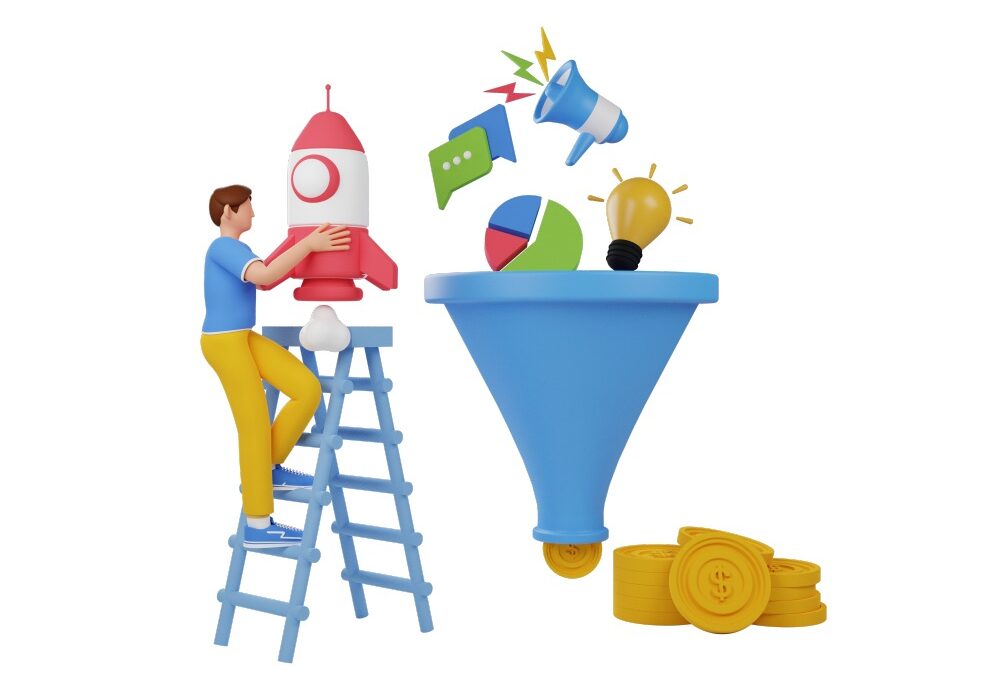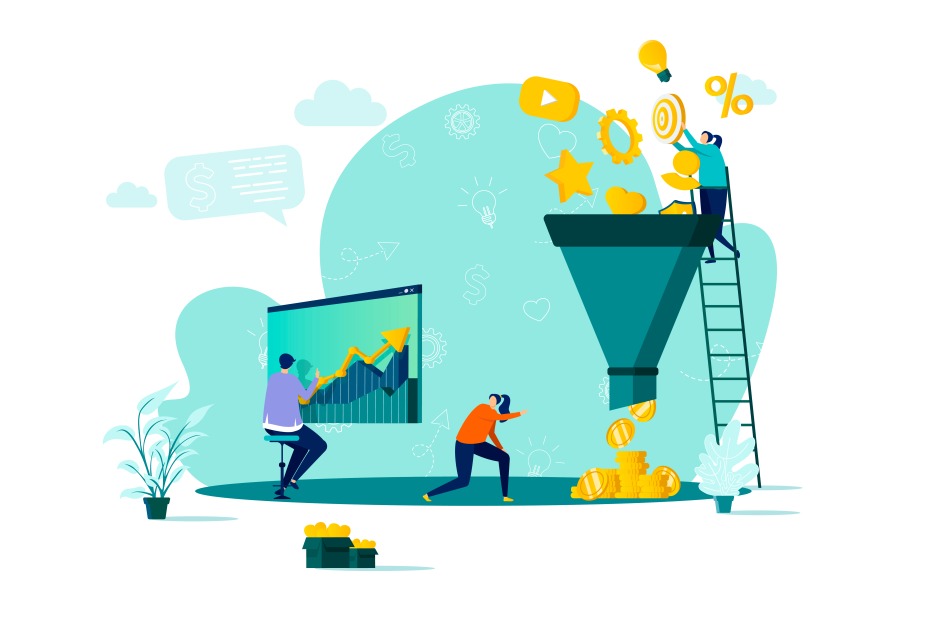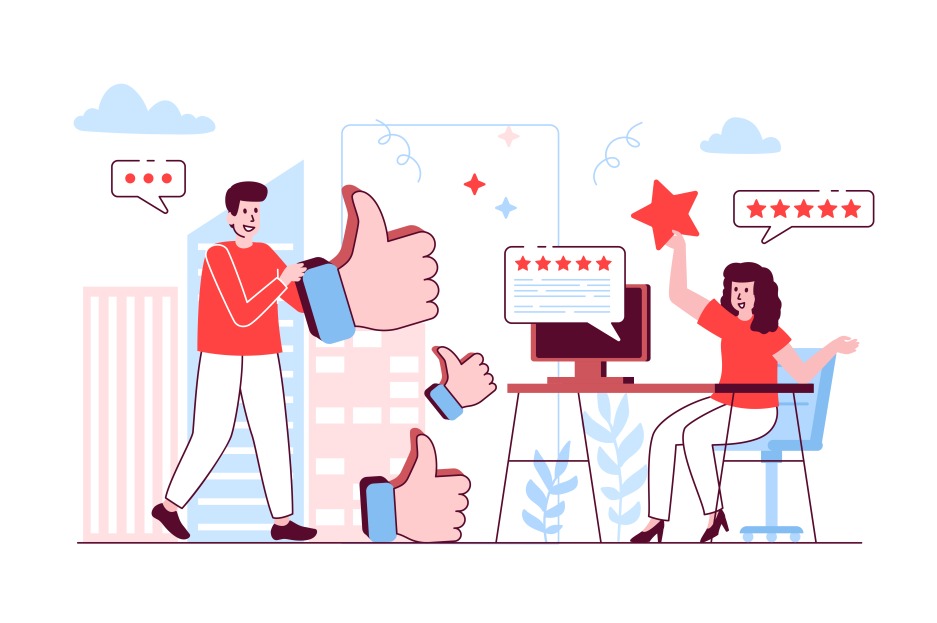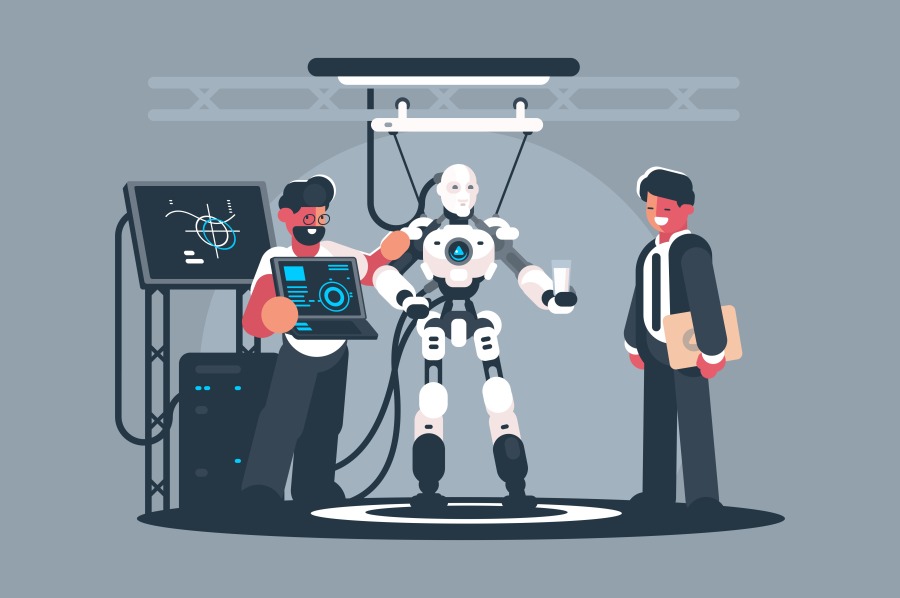Building an effective lead-generating funnel is a crucial step in reaching your goals, but creating one from scratch, especially one that brings in tangible results, can feel daunting. Fortunately for you, here is the inside scoop.
It is beyond crucial to have a successful sales funnel when marketing your SaaS products. Through crafting a solid digital strategy designed for SaaS success, you can effectively maximize your reach into potential and existing customer segments — all while keeping costs low in comparison with traditional advertising models such as television or radio spots.
Which is where this guide comes in—to help explain all the steps necessary so you can build yours and start seeing results. Keep reading to find out how easy it could be to improve those bottom lines with an optimized SaaS sales funnel.
Understanding SaaS Sales Funnel Basics
Building a SaaS sales funnel is one of the most critical elements of effective SaaS marketing. To do so, marketers must first understand the basics of how it works. At its core, the technique uses a combination of tactics and processes to drive customers through stages leading up to a purchase decision.
These stages range from identifying potential buyers to providing personalized information that fosters stronger relationships with prospects. Additionally, carefully crafted emails and offers sent at key touchpoints throughout the sales funnel can help move leads further along in their journey until they’re ready to buy.
With all these pieces in place, every SaaS business will have an effective platform for making powerful connections with prospective and existing customers while boosting ROI and creating lasting growth.
The Need For Specialized Sales Funnels For SaaS Businesses
SaaS businesses need highly effective sales funnel strategies if they are to achieve sales and overall success. A correctly designed funnel can increase conversion rates, and drive revenue growth over time.
Utilizing custom-tailored strategies that align with the growth objectives of each distinct business is critical for ensuring a successful impact on sales performance. A good sales funnel should contain a solid foundation of training, onboarding, and follow-up processes to help build relationships with potential buyers.
This includes providing useful information about their products or services, and showing potential customers why the offering is worth their attention. With an engaging message that resonates with leads, SaaS companies can successfully move them through the brand funnel and increase their chance of achieving a sale.
How To Build A SaaS Sales Funnel That Works
1. Understanding the SaaS Sales Funnel Stages
Before diving into the sales checklist and tactics, it’s essential to understand the stages in a SaaS marketing funnel. These stages often include:
Awareness: Your prospects first become aware of your software solution and its capabilities.
Interest: Prospects engage with your content, demonstrating a potential interest in your software.
Evaluation: Prospects compare your software with competitors, aiming to make an informed decision.
Purchase: Prospects decide to invest in your software and become customers.
Retention: Customers engage with your post-purchase content, increasing the likelihood of renewals and upsells.
Each stage requires specific marketing tactics and optimization techniques. Embrace a systematic approach to move your prospects from one stage to another seamlessly.
2. Targeted Lead Generation
For any sales funnel to be effective, it must begin with targeted lead generation. This means attracting leads who are likely to be interested in your SaaS product based on their demographics, online behavior, and expressed interests.
Lead generation begins with targeted content marketing to attract your ideal audience. Develop a content strategy that focuses on the topics your target audience frequently searches for or struggles with. By addressing their pain points, you present your software as a relevant solution.
Utilizing blogs, eBooks, infographics, or videos, showcase your industry expertise and create valuable resources that instill trust in your brand. Make sure to optimize your content through Search Engine Optimization (SEO), social media promotion, and email marketing to reach a wider audience. The key is to understand your target audience and employ tactics that resonate with them.
3. Lead Capture And Nurturing
Once your sales team has generated a pool of potential SaaS leads through strategic targeting efforts, the next step is to capture their information and nurture their relationship with your brand. This can be done through landing pages, webinars, free demos, or downloadable resources such as case studies and whitepapers.
Make sure your lead capture method matches the preferences of your target audience, and provide value in exchange for their contact information. After capturing marketing qualified leads, implement a lead nurturing strategy to educate them about your product and move them down the sales process towards conversion.
4. Sales-Qualification Process
Not every lead is the right fit for your software. To increase revenue and save time for your sales team, it’s important to establish a lead qualification process for your SaaS marketing strategy. This involves assessing the prospect’s level of need, budget, and interest in your SaaS product.
Use tools like lead scoring or decision-maker qualifiers to efficiently move the right leads down the funnel and effectively close deals.
5. Product Education And Product-Market Fit
A major differentiator between SaaS sales funnels and those of other industries is the emphasis on product education. Because software products can be complex, it’s essential that potential customers understand the value of your product and how it can solve their specific problems.
This means emphasizing your product’s features and benefits throughout the sales funnel, but also providing resources such as tutorials, webinars, and blog posts that answer common questions and concerns.
Consider offering a free trial or freemium version of your software to give prospects a firsthand experience, leading them one step closer to purchase. Let your marketing team monitor user behavior and interactions within the trial period to identify potential barriers or pain points, and address them proactively.
Another key aspect of the SaaS sales funnel is ensuring genuine product-market fit, which means that your product addresses a genuine need in the market and is something that customers are willing to pay for. If your product lacks a reasonable market-fit need, customer acquisition becomes a challenge.
Want to unlock the full potential of your SaaS business with a powerful sales funnel?
Contact Growth Hackers
6. Shorten Your Free Trial Period
If you offer a free trial, consider shortening the trial period to create a sense of urgency with your prospects. Longer trial periods can lead to drop-offs and lack of commitment. By shortening the trial duration, you’re not only pushing the prospect to evaluate the product quicker but simultaneously speeding up your sales process.
7. Onboarding And Customer Success
As a sales rep, your focus shouldn’t just be on getting leads to convert into customers—but also setting them up for long-term success with your product. This means providing a seamless onboarding process and emphasizing customer success.
In addition to offering helpful resources and support options, consider using automated emails or in-app messaging to guide new customers through the onboarding process. Monitor usage patterns and identify any friction points in the user experience that need to be addressed.
The goal is to create a foundation of satisfied customers, in other words promote customer retention with ample satisfaction, who are more likely to refer your product to others and continue using your service in the long term.
8. Retention, Upselling, And Referral Strategies
The last section of the SaaS sales funnel isn’t the endpoint of the customer journey; it’s just the beginning. Here, you’ll focus on retaining existing customers, upselling additional products or subscription tiers, and encouraging referrals.
For SaaS businesses, customer retention is vital, as the monthly recurring revenue model relies on long-term relationships. To maintain customer satisfaction, your marketing and sales team should continuously assess your product’s performance, provide top-notch customer support, and listen to feedback to make improvements. Opportunities for upselling should be presented in a non-pushy manner and should directly relate to customers’ needs.
Finally, leverage your satisfied customers as brand ambassadors and encourage them to refer your product to others, rewarding them with perks or incentives to show your appreciation. There is no limit to setting a Customer Lifetime Value standard for your marketing efforts.
Maximizing Your Sales Funnel With SaaS Strategies
As a marketer, you know that optimizing your sales funnel is one of the key elements to success. For software as a service (SaaS) businesses, it can mean the difference between generating leads and conversions or losing customers. But what are the best strategies to maximize a sales funnel?
Read on to explore some tried-and-tested SaaS techniques to ensure your sales funnel strategy is running optimally.
1. Understanding Your Buyer’s Journey
The first step in creating an effective sales funnel for your SaaS business is understanding your buyer’s journey. To do this, you must identify what motivates them to purchase and how they interact with your product or service. Utilize customer surveys and feedback to understand their needs so you can create content tailored to them.
Once you have identified the motivation behind their purchasing decisions, you can create an effective sales funnel tailored to those needs.
2. Creating Content That Converts
Once you have identified the needs of your buyers, you should create content that will convert them into customers. This means creating content that focuses on solving their problems instead of letting your sales teams to focus on simply selling your product or service.
Aim for content that educates potential buyers by providing valuable advice and insights into their industry and niche. This will help build trust with potential customers and encourage them to take action when they enter the next stage of the funnel.
3. Utilizing Automation Tools
The next step in optimizing your sales funnel is utilizing automation tools. Automating certain processes can save time while also helping you target potential buyers more effectively. With automation tools, you can set up automated emails that provide useful information based on where potential buyers are in the sales process. You can also use automation tools to track website activity such as page views and time spent on each page so you know which pages are performing best. This data can be used to refine and optimize your website for maximum conversions down the line.
4. Tracking The Right SaaS Sales Funnel Metrics
As each potential customer moves through the sales funnel, marketers must track certain key performance indicators (KPIs) to measure how well their marketing strategies are performing. These KPIs help marketers identify areas where improvements can be made and enable them to make adjustments in order to optimize their campaigns and drive more conversions.
So, which KPIs should you be tracking? Well, there is no “one size fits all” answer here; different companies have different goals and objectives. However, some of the more common metrics that every marketer should consider include.
User behavior
Tracking user behavior effectively allows SaaS businesses to accurately identify problems in the user journey and ultimately improve their overall sales numbers.
For example, understanding the page views and time spent per page helps businesses determine potential areas of concern or where conversions are likely to be increased with further effort. Additionally, by tracking click-through rates on specific landing pages or CTAs, sales reps can determine if there is a bottleneck in their sales process that needs to be fixed in order to increase conversion rates.
Conversion rates
Tracking conversion rates for your SaaS sales funnel is an essential way to gauge the effectiveness of your efforts. Understanding various aspects of changes to, and within, each part of the funnel can tell you a lot about the overall user experience. This could be anything from user retention rate post-purchase, potential online customer lifetime value (CLV), to evaluating promotional offers; if one product type or segment outperforms another in repeat orders.
With detailed conversion rate data, it’s possible to accurately predict how changes to particular parts of a sales funnel will affect its performance as a whole. As a result, businesses should make sure they are able to effectively track this important metric for insight into customer behavior patterns, helping them make better strategic decisions moving forward.
Reducing churn
By assessing churn rates over time, we can determine whether customer loyalty and retention efforts are achieving satisfactory results. Careful monitoring of customer behaviors followed by systematic attempts to address customer grievances in a timely manner gives us an added opportunity to reduce churn and increase ongoing profitability.
Combining data from campaigns, marketing analytics, product usage metrics, surveys and customer interviews helps to provide accurate insight into customer sentiment which forms the foundation for any successful turnover reduction strategy.
Now is the time to build a foolproof SaaS sales funnel!
Cohort analysis
Cohort Analysis is a powerful metric used to monitor and measure customer engagement within the SaaS sales funnel. By tracking customer interaction over time, it enables businesses to hone in on valuable cross-sectional insights that can be leveraged to improve and optimize user engagement, enhance customer experiences, and drive SaaS revenue growth.
With the right opportunities identified and unlocked by Cohort Analysis, businesses stand ready to capture increasing returns as they apply marketing initiatives with greater accuracy thereby giving them an advantage over their competition.
Customer Acquisition Cost
Tracking customer acquisition costs helps your Sales and Marketing teams identify how much they are spending to acquire a new customer; providing important information to calculate return on investment, as well as optimize overall expenditure. It is calculated by measuring the total amount of money spent to acquire leads and convert them into customers.
This includes both traditional marketing expenses, such as advertising and promotional budgets, as well as the costs associated with Sales development reps and onboarding activities–such as professional services fees, training costs, and support plans.
Number Of Referring Affiliates
By understanding which sources your paying customers come from, you can optimize your acquisition strategy to ensure the best results. That’s why tracking the number of referring affiliates is one of the most important metrics to consider in order to measure the effectiveness of your outreach efforts. It gives you insight into which channels are driving customers to purchase and allows you to optimize accordingly.
Additionally, it serves as a great way to attribute credit appropriately when multiple sources work together to convert a customer. Ultimately, tracking referring affiliates in your SaaS sales funnel is essential in order to maximize return on investment and reach your marketing goals.
A/B Testing
A/B testing is a tried and true tactic to ensure that businesses are making the most effective use of their SaaS funnel strategies. It essentially involves running two versions of the same advertisement, web page, SaaS email marketing campaign or promotional offer in a randomized fashion, and then comparing which version generates better results.
A/B testing provides a way to continuously refine your SaaS sales funnel strategies according to observed customer behavior, giving you clarity around the best approach and helping ensure maximum return on your resources through data-driven decision-making. This kind of detailed insight enables you to identify potential weaknesses and optimize any opportunities for improvement in order to drive customer acquisition, revenue and profitability.
Final Thoughts On How To Build A SaaS Sales Funnel That Works
Building a profitable SaaS sales funnel that works isn’t easy, but it’s definitely achievable. It requires an investment of time and resources to properly optimize your funnel for improved performance.
From defining your ideal customer profile to leveraging content marketing to drive qualified leads into your funnel, to optimizing the structure and messaging of each stage with A/B testing; there are many different techniques that you can use to ensure high conversion rates.
With a clearly defined sales funnel, an effective marketing strategy in place, and a focus on streamlining processes for optimal sales efficiency, you can create a successful system for growing your SaaS business.
Growth Hackers is the perfect partner for businesses looking to build a SaaS sales funnel that works. We provide comprehensive digital marketing services and strategies, tailored to your unique business needs and objectives.
Our team of experts dives deep into your customer data, breaking down trends and behaviors in order to create actionable insights for measurable results. Instead of focusing solely on increasing sales, we aim towards providing sustainable long-term growth for your business through deep analysis across all aspects of digital advertising campaigns
If you’re ready to grow your business, contact Growth Hackers today and let’s get started!








